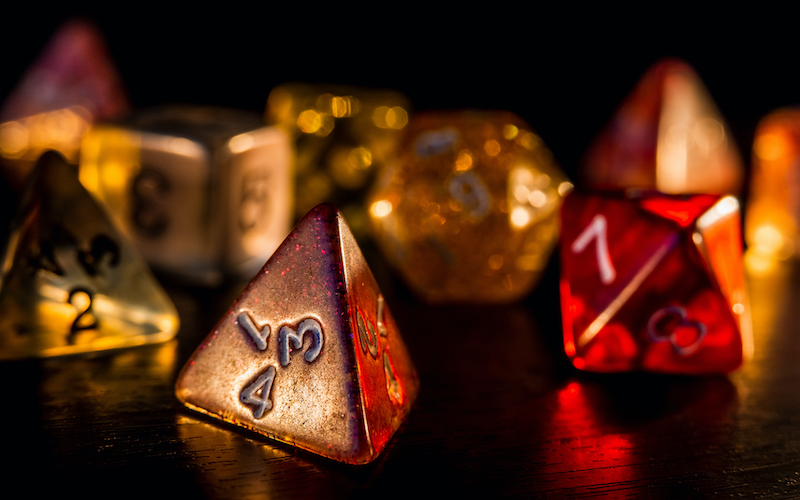Since I wrote the introduction to this series I’ve had a few more thoughts that I wanted to share. Hopefully these new ideas will give me more to track as I experiment with different games, and a few more levers I can pull to adjust how those games go. When I write about my experiments I’ll try and cover as many of these points as possible so we can see how they affected the outcome.
If you read the introduction, you’ll be familiar with my theory that games exist along a spectrum between what I’m referring to as Objective-Based and Narrative-Based. I’m not insisting that this is the only way to look at things, and the points below should show there are many different elements that can be taken into account.
But first, I feel the need to express exactly what I’m trying to achieve by running these experiments, so here goes:
- To explore different ways of playing.
- To be a better gamemaster.
- To provide my players with different experiences.
- To learn how to tailor an experience to a group and give them a game that suits their style.
Before discussing these points I think it bears repeating that there is no ‘correct’ way to do any of this, each is just a valid as another.
Who should do the work?
Obviously a role playing game is a lot of work, but who should be doing that work? The typical image of a gamemaster is one of a person slaving away so the players can arrive and have a good time playing through what has been meticulously prepared.
This may work fine at the Objective-Based end of things, and is perfect for a single session dungeon bash, but I’m not convinced it’s what is required on the Narrative-Based side. Though it may be what the players want, I’m not convinced it’s what they need. It takes any incentive to be engaged with the game away from them.
I think gamemasters should be wary of taking too much work away from the players. If they put in just a little work they are far more likely to be invested in the outcome.
Players may not want to spend hours preparing in the way that gamemasters do, but I think taking a little time thinking about their character and the world may help with the next point…
Active and reactive players.
Many players react to what is in front of them rather than taking the initiative to follow their character’s desires or needs. There could be many reasons for this.
Maybe they’ve never been given the freedom to do this in previous games. Or maybe it’s never been pointed out to them that this kind of behaviour is allowed. I believe it should be encouraged. This can also be a problem with published adventures (and maybe any game on the Objective-Based side of things) as there is an obvious endpoint.
The character’s desire to do their own thing doesn’t fit in with published adventures, and is a consequence of the way they are designed. They are a one-size-fits-all product written by a someone who doesn’t know your party and so must be generic enough to accomodate any group.
Some players may feel uncomfortable coming up with content, thinking they will be judged if it’s not good enough. No doubt you can overcome this introducing it little by little over a period of time.
Getting players to be creative could probably take up a whole experiment on its own, and should also form part of the session-zero conversation.
Athough I’ve mentioned that players may be required to do more work towards the Narrative-Based end of the spectrum I’m not suggesting there isn’t work for them to do in Objective-Based games.
Adversarial and collaborative relationships.
This was mentioned in the introduction. My current thinking is that the further towards a Narrative-Based game you get, the less adversarial the relationship between gamemaster and players will be.
I think the adversarial/collaborative split may be more closely tied to the Objective-Based/Narrative-Based spectrum than the active/reactive idea above, but that doesn’t mean we shouldn’t try and alter it. Even in a purely Objective-Based game the gamemaster can be a fan of the players whilst putting them through a tough time. I’m not sure how an adversarial Narrative-Based game would work, but it may make for an interesting experiment!
Player character resolution.
What do I mean by character resolution?
The lowest resolution character would be little more than a page full of stats and possibly a name.
A high resolution character would have a full backstory and reasons why they are good (or bad) at various things. They probably have goals, motivations, desires and faults too, along with a list of relationships with both player and non-player characters.
Could the chosen game make a difference here? Some games have a lifepath character creation system where in order to generate a character you must decide on how they became the person they currently are. Others have a series of questions to answer filling in some of their history.
Contrast this with a game that is strictly a point-buy system, there is no need to explain why the character is good at the things they can do, and hence is lower resolution.
Getting the players to adjust the character resolution will only make a difference if they are playing a game that accomodates that level of resolution. There is no point getting a player to create a extrememly high resolution character and dropping them into a single session Objective-Based dungeon bash. Alternatively, if you’re playing a political and social Narrative-Based game you’ll need to know a lot more about the character than how much damage their broadsword can do.
I believe that in a more Narrative-Based game, if the characters have a high enough resolution, the story will generate itself. Then the gamemaster can create equally high resolution villains and see how the story progresses.
